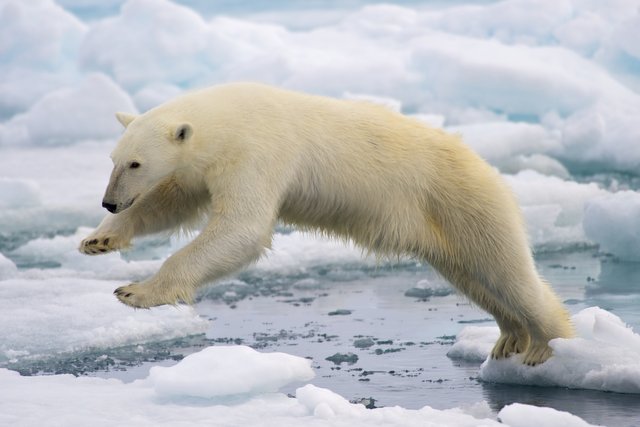The polar bear, scientifically known as Ursus maritimus, is an awe-inspiring creature perfectly adapted to the extreme conditions of the Arctic. With a majestic presence, these bears boast a thick layer of insulating blubber and dense fur, appearing white to seamlessly blend into their snowy surroundings. Their remarkable physical adaptations, including specialized paws and a keen sense of smell, enable them to navigate the icy landscapes with unparalleled grace.
Polar bears are carnivorous giants that predominantly feed on seals, showcasing exceptional swimming abilities to hunt in the Arctic waters. The iconic image of a polar bear patiently waiting near a breathing hole in the ice to ambush a seal is a testament to their strategic prowess.
However, the very essence of polar bear survival is under threat due to climate change. The ongoing loss of sea ice jeopardizes their traditional hunting grounds, leading to challenges in finding food and contributing to malnutrition. This, in turn, has prompted their classification as a vulnerable species.
Conservation efforts are crucial to ensuring the continued existence of polar bears. Global initiatives addressing climate change, the creation of protected areas, and the implementation of sustainable practices play pivotal roles. The impact of climate change on the Arctic ecosystem, and subsequently on polar bears, underscores the urgency in adopting comprehensive measures to protect these majestic creatures.
In addition to their environmental significance, polar bears exhibit fascinating behavioral traits. Female polar bears, for instance, construct dens in the snow to give birth and nurture their cubs, entering a period of dormancy during this critical time. Cubs remain with their mothers for about two years, learning essential survival skills before venturing out into the icy wilderness.
As we marvel at the magnificence of polar bears, it is incumbent upon us to recognize the interconnectedness of their fate with broader environmental issues. The conservation of these Arctic giants goes beyond preserving a single species; it is a call to safeguard the delicate balance of the entire Arctic ecosystem, reflecting our shared responsibility in the face of a changing climate.
